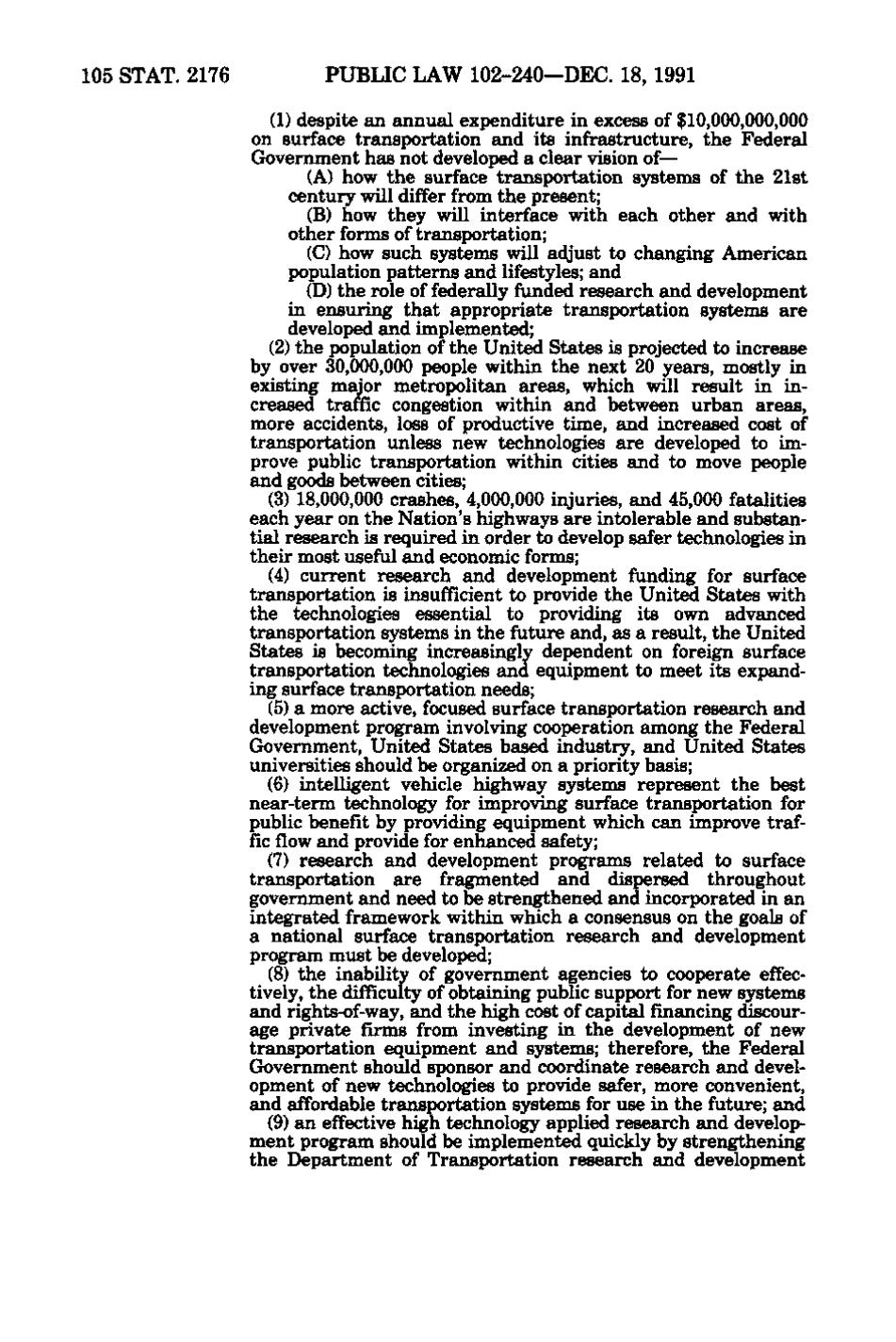105 STAT. 2176 PUBLIC LAW 102-240—DEC. 18, 1991 (1) despite an annual expenditure in excess of $10,000,000,000 on surface transportation and its infrastructure, the Federal Government has not developed a clear vision of— (A) how the surface transportation systems of the 21st century will differ from the present; (B) how they will interface with each other and with other forms of transportation; (C) how such systems will adjust to changing American population patterns and lifestyles; and (D) the role of federally funded research and development in ensuring that appropriate transportation systems are developed and implemented; (2) the population of the United States is projected to increase by over 30,000,000 people within the next 20 years, mostly in existing major metropolitan areas, which will result in increased traffic congestion within and between urban areas, more accidents, loss of productive time, and increased cost of transportation unless new technologies are developed to improve public transportation within cities and to move people and goods between cities; (3) 18,000,000 crashes, 4,000,000 injuries, and 45,000 fatalities each year on the Nation's highways are intolerable and substantial research is required in order to develop safer technologies in their most useful and economic forms; (4) current research and development funding for surface transportation is insufficient to provide the United States with the technologies essential to providing its own advanced transportation systems in the future and, as a result, the United States is becoming increasingly dependent on foreign surface transportation technologies and equipment to meet its expanding surface transportation needs; (5) a more active, focused surface transportation research and development program involving cooperation among the Federal Government, United States based industry, and United States universities should be organized on a priority basis; (6) intelligent vehicle highway systems represent the best near-term technology for improving surface transportation for public benefit by providing equipment which can improve traf- fic flow and provide for enhanced safety; (7) research and development programs related to surface transportation are fragmented and dispersed throughout government and need to be strengthened and incorporated in an integrated framework within which a consensus on the goals of a national surface transportation research and development program must be developed; (8) the inability of government agencies to cooperate effectively, the difficulty of obtaining public support for new systems and rights-of-way, and the high cost of capital financing discourage private firms from investing in the development of new transportation equipment and systems; therefore, the Federal Government should sponsor and coordinate research and development of new technologies to provide safer, more convenient, and affordable transportation systems for use in the future; and (9) an effective high technology applied research and development program should be implemented quickly by strengthening the Department of Transportation research and development
�
